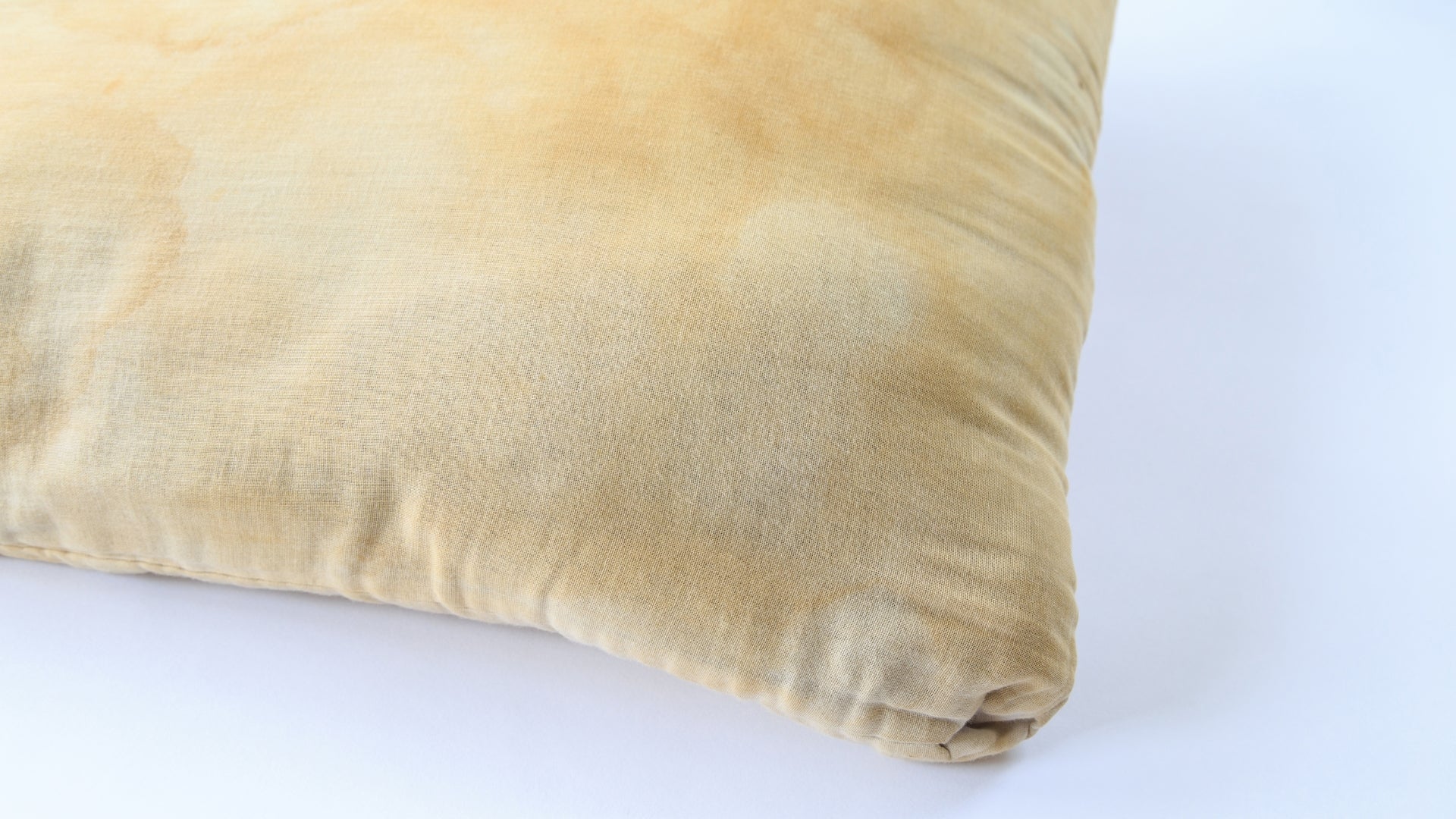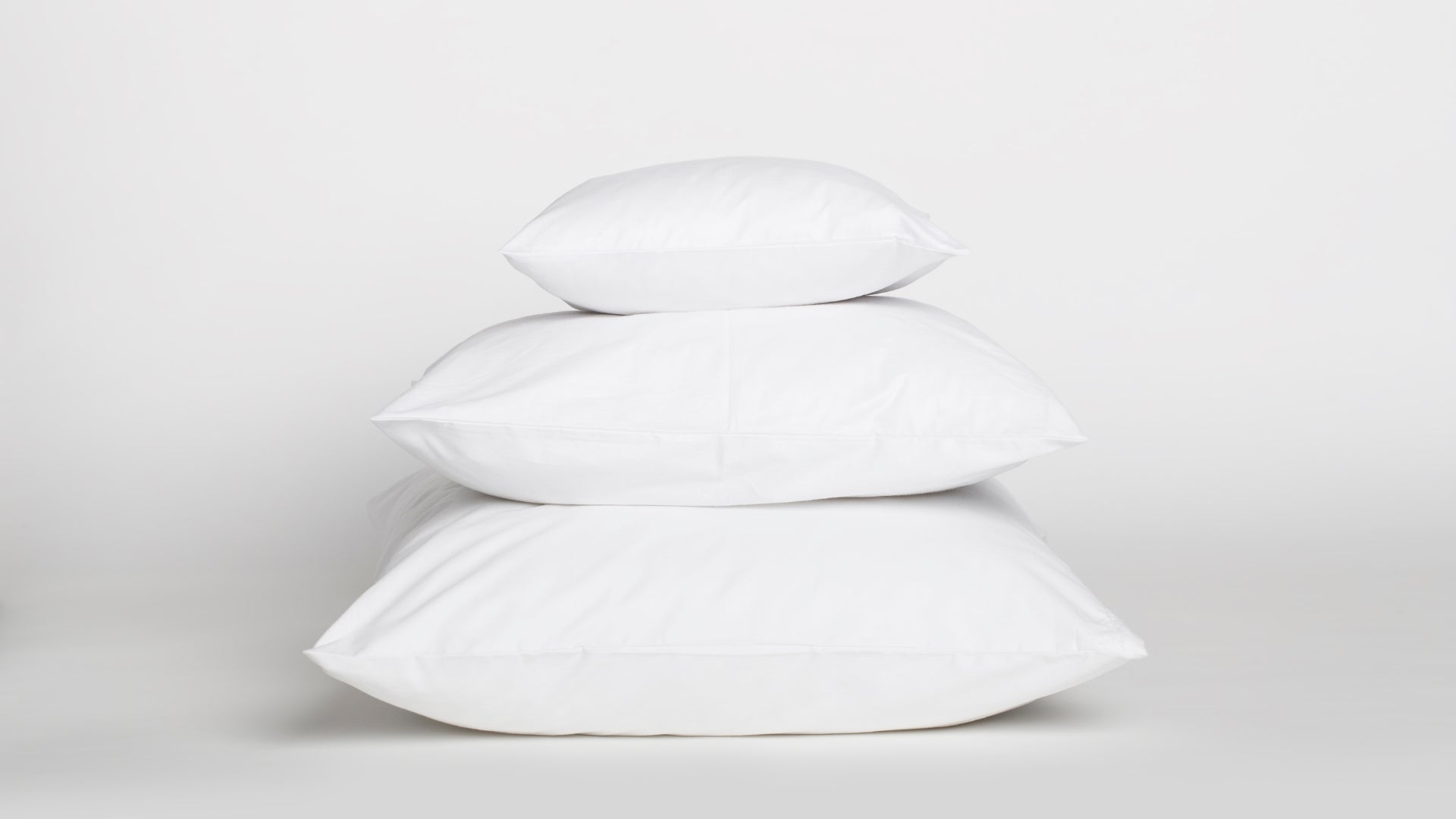How Long Do Pillows Last?
Pillows generally last between 1 to 2 years, depending on the type of pillow and how well it’s maintained. Over time, pillows can lose their shape, support, and become a breeding ground for allergens. To keep your pillows fresh and supportive, replacing them every 2 years, whilst regularly using a pillow protector and washing your pillow during that time.How Often Should I Wash My Pillow?
Pillows should be washed every 3 to 6 months, depending on the type of pillow and your personal hygiene habits. Regular washing helps remove dust, sweat, and allergens that accumulate over time. Always check the care label for specific washing instructions, as some pillows may require spot cleaning or professional cleaning.
See our pillow care and maintenance guide here.
How Do I Know if a Pillow Is Right for Me?
Choosing the right pillow depends on your sleep position, personal comfort preferences, and any specific needs like allergies or neck pain. Here’s a quick guide:
Side Sleepers:Look for a firmer, thicker pillow that supports your head and neck, keeping your spine aligned.
Back Sleepers: A medium-firm pillow that supports the natural curve of your neck is ideal.
Front Sleepers: A softer, flatter pillow helps reduce strain on your neck and lower back.
Allergy Sufferers: Opt for hypoallergenic or anti-allergy pillows that resist dust mites, mould, and other allergens.
Neck or Shoulder Pain: Consider a memory foam or ergonomic pillow that moulds to your shape and provides targeted support.
If you’re still unsure, our 24/7 order line is always available to provide personalised advice and recommendations based on your specific needs! Call us on 0333 577 0144.
Can Pillows Help with Snoring?
Yes, certain pillows are designed to help reduce snoring. Anti-snore pillows are contoured to support your head and neck in a way that opens up your airways, making breathing easier and reducing the likelihood of snoring. Elevating your head with a thicker or adjustable pillow can also help in some cases.
See our collection of anti-snoring pillows here
How Do I Keep My Pillow from Getting Lumpy?
To prevent lumps, fluff and plump your pillow daily to help redistribute the filling. Washing your pillow according to the manufacturer’s instructions and drying it thoroughly (using dryer balls can help) will also maintain its shape. Regularly rotating and flipping your pillow can also extend its life and keep it evenly filled.Are There Pillows That Stay Cool All Night?
Yes, cooling pillows are designed to regulate temperature and keep you cool while you sleep. They are made with cooling technology like ultra cool covers, breathable latex, or fabrics that wick away moisture and dissipate heat, ensuring a comfortable and cool sleeping surface.
See here for our collection of cooling pillows.
Can I Use Two Pillows Instead of One?
Using two pillows can be beneficial for some sleepers, particularly side sleepers who often need extra elevation or support. However, stacking pillows may lead to improper neck alignment, which can cause discomfort. If you prefer more height, consider using a thicker pillow designed to provide the support you need with just one.What’s the Difference Between Down and Feather Pillows?
Down pillows are filled with soft under-feathers, usually of ducks or geese, and are known for their softness and luxurious feel. Feather pillows, on the other hand, are filled with the outer feathers of birds and tend to be firmer and more supportive. Down pillows are generally more expensive but offer a plush feel, while feather pillows provide more structure and support. The mix of feather and down in one pillow is a popular option as you get the comfort and support all together.
See here for our feather and down pillows.





Leave a comment
This site is protected by hCaptcha and the hCaptcha Privacy Policy and Terms of Service apply.